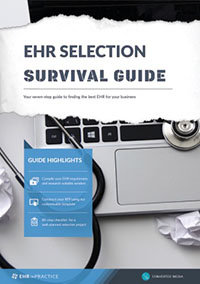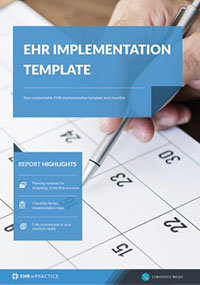Paper Charting to EHR Software: 4 Common Mistakes
As healthcare clinicians, we understand the importance of documentation for clinical care and reimbursement. But the way we manage this documentation is changing and many of us are considering or implementing a switch from paper charting to EHR. The process of transitioning from paper charting to an EHR system is a challenging one. But from my experience there are four common mistakes which can derail the switch.
1. Under Training the Clinicians and Staff
As clinicians, we want a way to make documentation easier and more streamlined. So, we all have great incentive to make EHR documentation work. However, if clinicians and staff are undertrained, we can easily get frustrated with the new system. If a clinician knows how to care for their patient, but cannot find the right icon to enter their diagnosis code or treatment intervention, frustration and even anger are bound to ensue. It is crucial that the clinicians, office managers, and all staff members are properly trained in the new system prior to launching.
2. Expecting Immediate Success and High Productivity
Let’s face it; people don’t like change. Administrators must be prepared for a little resistance from seasoned clinicians who are set in their ways. For some clinicians, the switch from paper charting to EHR can be a daunting task. Be sure to listen to concerns and offer options for continued education; it will take time to master a new system and you will need to re-educate users continually.
Reccomended Reading: EHR Software Vendor Directory - ensure your EHR vendor knowledge is 100% accurate
I also found that frustration ensued when nurses, therapists and physicians were expected to keep up with their usual amount of patient care while learning and inputting data into the new EHR system. Allow extra time in your users schedule for training and data entry during this transition.
3. Assuming the IT Team Know What the Clinicians Need
Your IT department will never fully understand the intricacies of your medical documentation requirements. When switching from paper charting to EHR, it is important for IT and clinicians to collaborate in order to increase trust in the new system and avoid headaches down the line.
it is important for IT and clinicians to collaborate in order to increase trust in the new system and avoid headaches down the line
In my experience at the sub-acute rehabilitation facility, I was able to modify the physical therapist evaluation menu through collaboration with the IT team. This allowed me to include more detailed descriptors and a section for additional comments on patient records, thus making my therapy evaluations more efficient and complete.
4. Improper Planning for Paper Chart Storage
What happens to all of those large binders, portfolios, and paper reams? Establishing a protocol for accessing and storing paper information will be crucial for a successful transition to EHR. I experienced a situation in which all old paper charts were stored in a remote building off-site. A patient discharged from the sub-acute rehabilitation facility returned two weeks later, but their paper chart and past medical history were in a building several miles away, so everything had to be inputted into the EHR system from scratch. In general, I feel that keeping the last three months of information on site is a safe guideline during the transition.
The underlying lesson behind most of these mistakes is to plan for challenges and failures during a switch from paper charting to EHR. Listen to your clinical staff and address their concerns. Proper education on the challenges ahead is key to avoiding frustration amongst your team.
Free white paper

EHR Selection Survival Guide
The comprehensive guide to selecting the best EHR system for your medical practice.

Featured white papers
-

EHR Implementation Template
Get all the planning tools you need to make your EHR implementation a success
Download -

EHR implementation: 6 steps to success
Step-by-step information on how to implement EHR effectively
Download -

EHR Vendor Directory
Get the most up-to-date directory of EHR software vendors. Find the best software for your practice.
Download
Related articles
-

EHR Implementation Plan: Your 8-Step Checklist
Your comprehensive checklist for creating an EHR implementation plan.
-

A template for your EHR project implementation timeline
Determining your EHR project timeline will prove tricky, but having some expectations of time fra...
-

5 important areas of EHR training during implementation
Successful EHR implementation is not possible without crucial EHR training

